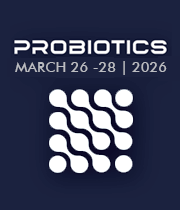Title : Use of probiotic Bacillus Subtilis and chia meal in broiler. Impact on gut histomorphometry and productive performance.
Abstract:
In poultry production, there is a growing interest in researching possible alternatives in the diet that are translated into animal growth and health benefits. In this sense, the use of probiotics has attracted great interest as a viable alternative to the use of antibiotic growth promoters. In addition, enriched broiler diet with omega n-3 polyunsaturated fatty acids (n-3 PUFA) has a beneficial effect on the immune system, increasing performance and resistance to poultry diseases. The addition of a probiotic combined with a source of n-3 PUFA in the diet could exert a complementary action. Probiotics promote the absorption of n-3 PUFA and these fatty acids improve the adhesion of probiotics to intestinal mucosa. The purpose of this research was to evaluate the effect of the addition in the diet of a probiotic (Bacillus subtilis; Laboratorios Biotay, Argentine) and/or a by-product of the agroindustry, chia meal (Salvia hispánica L.; DESUS S.A, Argentine) on gut weight, intestinal histomorphometry and productive performance of broiler. The results obtained in this work suggest that the addition of 250 g/ton 1x109 UFC of Bacillus subtilis or 15% chia meal in broiler diet had no effect on productive parameters and commercial cuts. Furthermore, a synergistic effect between n-3 PUFA and the probiotic was expected to be evidenced. The mucilage (soluble fiber) present in chia meal would increase digestive passage speed, thereby affecting absorption of nutrients and adhesion of Bacillus subtilis to intestinal mucosa through biofilm formation. Moreover, n-3 fatty acids could decrease probiotic growth capacity by inducing changes in the fluidity of the microorganism’s membrane (Gram +). In addition, there is evidence that bacteria can capture PUFA, decreasing their availability for metabolic purposes. In the interpretation of productive results, it is also important to take into consideration the effect of n-3 PUFA and mucilage of chia meal on gut weight and mucosal structure. Chia meal diet enhanced small intestinal weight and crypt depth, leading to increased development of intestinal villi. However, the higher absorptive surface area was not reflected by an enhancement of productive parameters. Maintenance energy is largely related to the intense metabolic activity of the digestive organs. Increased small intestine weight results in higher maintenance requirements and lower energy for production. The lack of differences observed in performance parameters in chia meal diet could be attributed to a trade-off between the promotion of intestinal mucosal development and increased maintenance energy. Further research is needed to determine the effect of removing chia mucilage or using enzymes as carbohydrases to reduce intestinal viscosity, as well as to study the possible effect of higher doses of Bacillus subtilis and time of exposition on broiler diet.




